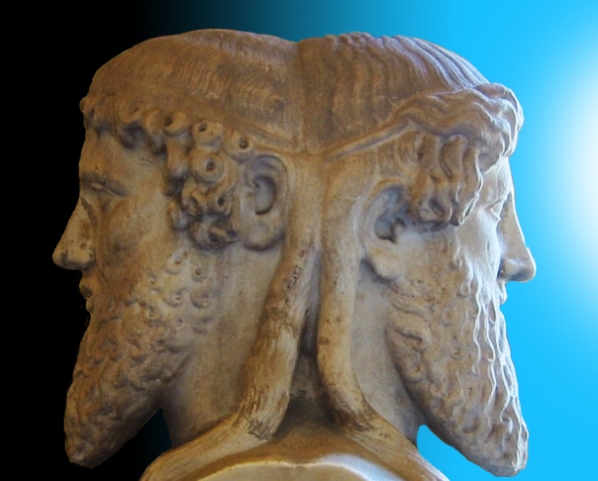Historical commentary. New Year celebrations have been celebrated since the third millennium BCE when the ancient Babylonians celebrated it in mid-March. The Babylonians celebrated for twelve days during which prayers were recited, mock battles fought, trees were decorated as well as sacrifices and fertility rites performed.
According to The world book Encyclopaedia, January 1st was established as the New Year by the Roman Emperor Julius Caesar in 46 BCE shortly after his conquest of Egypt. Prior to that, the Romans like the Babylonians, celebrated the New Year in March. This new date was dedicated to Janus, the Roman god of beginnings, change and endings. For this reason he is depicted as a two faced god: one looking forward and the other looking backward.
Today, depending on whether one observes the Gregorian, Lunar, or Ethiopian calendar, the New Year falls on different dates and customs associated with New Year festivities vary from country to country. Today as in antiquity, The New Year is seen as a time of recreation- a new beginning and while many of the customs have ceased to be practiced with full cohesion, many still remain and are observed subconsciously.
A typical New Year’s celebration for most people in England consists of partying, watching a firework display and making a New Year’s resolution. However, in the past, celebrants had to banish wicked spirits and all the bad luck that had manifested during the previous year to prevent it from affecting the New Year. For that reason there were different rites of purification that had to be followed to guarantee a promising future.
In the USA, the custom is to shoot out the old year and usher in the New Year with a bang; so many people follow this tradition by shooting loaded pistols into the air at midnight. The Chinese, who invented fireworks, had complex views about religion and the afterlife and practiced shamanism. Their belief in malevolent spirits caused them to use firecrackers in their New Year’s celebrations in the belief that loud noises would drive away evil spirits.
These practices were taken to the USA by Chinese immigrants who began settling there in the 1820s. Instead of using firecrackers to make loud noises, European Americans soon adopted firing their guns into the air to usher in the New Year. Furthermore, many people are unaware that the horns and fireworks that can be heard in parties and public places in the onset of the New Year were once practiced to cast out evil spirits.






